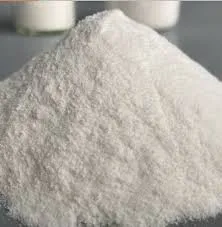
ಆಕ್ಟೋ . 16, 2024 01:54 Back to list
hydroxyethyl cellulose hec
Hydroxyethyl Cellulose (HEC) Properties, Applications, and Benefits
Hydroxyethyl cellulose (HEC) is a water-soluble polymer derived from cellulose, a natural polymer obtained from plant cell walls. It is widely used in various industries due to its unique properties, including its ability to form gels, its excellent film-forming capacity, and its thickening abilities. HEC is non-ionic and has a high degree of water absorption, making it an ideal candidate for products that require viscosity modification and improved texture.
One of the key properties of HEC is its solubility in both hot and cold water, which allows it to be utilized effectively in a range of temperatures. When dissolved, it forms a clear, viscous solution that can enhance the stability and appearance of many formulations. This characteristic is especially valued in the cosmetic and personal care industries, where HEC is used in creams, lotions, and gels to improve texture and moisture retention.
Hydroxyethyl Cellulose (HEC) Properties, Applications, and Benefits
The pharmaceutical sector also benefits from the use of HEC. It is commonly found in antibiotic ointments, suspensions, and various topical formulations due to its ability to increase viscosity and control the release of active ingredients. By slowing down the release rate, HEC helps maintain therapeutic levels of drugs, thus enhancing efficacy and patient compliance.
hydroxyethyl cellulose hec

HEC's application in food products is another area of interest. As a food additive, it serves as a thickening agent and emulsifier, contributing to improved texture and mouthfeel. Its safety and non-toxic nature make it suitable for use in various food formulations.
Environmentally, HEC is recognized as a greener alternative among synthetic polymers due to its natural origin and biodegradability. This property aligns with the growing demand for sustainable materials and products that have minimal adverse effects on the environment.
The versatility of HEC is reflected in its numerous applications across diverse industries. Researchers and manufacturers continue to explore new uses and formulations, further expanding its impact. As industries evolve and adapt, hydroxyethyl cellulose stands as a vital component, bridging the gap between functionality, performance, and environmental sustainability.
In conclusion, hydroxyethyl cellulose is a remarkable compound with a plethora of applications across various sectors. Its distinctive properties render it indispensable in personal care, construction, pharmaceuticals, and food industries. With the ongoing advancements in technology and sustainability, HEC is set to play an even more significant role in the development of innovative products that meet the modern world's demands. Whether for enhancing texture, providing stability, or promoting sustainability, hydroxyethyl cellulose's future appears bright.
-
The Widespread Application of Redispersible Powder in Construction and Building Materials
NewsMay.16,2025
-
The Widespread Application of Hpmc in the Detergent Industry
NewsMay.16,2025
-
The Main Applications of Hydroxyethyl Cellulose in Paints and Coatings
NewsMay.16,2025
-
Mortar Bonding Agent: the Key to Enhancing the Adhesion Between New and Old Mortar Layers and Between Mortar and Different Substrates
NewsMay.16,2025
-
HPMC: Application as a thickener and excipient
NewsMay.16,2025
-
Hec Cellulose Cellulose: Multi functional dispersants and high-efficiency thickeners
NewsMay.16,2025







